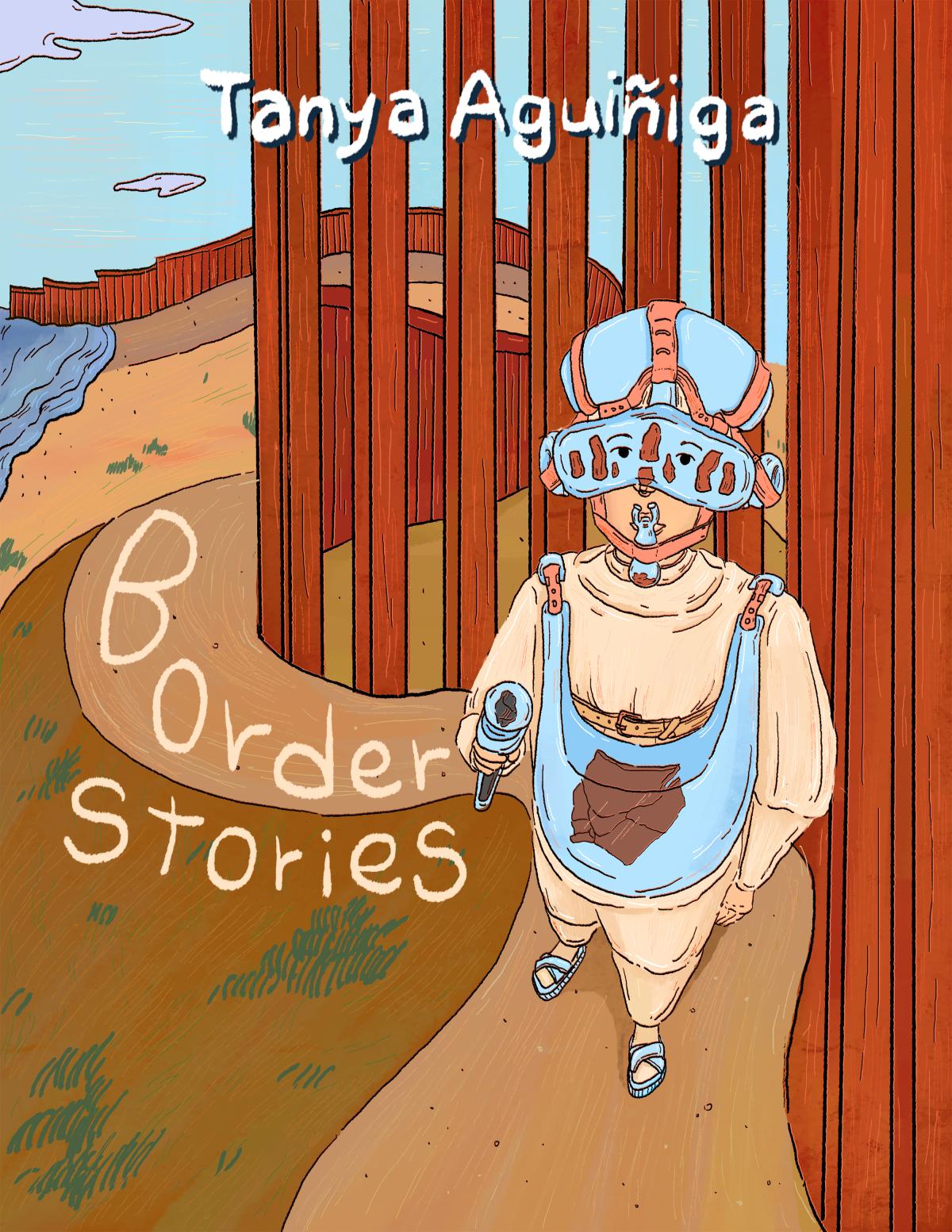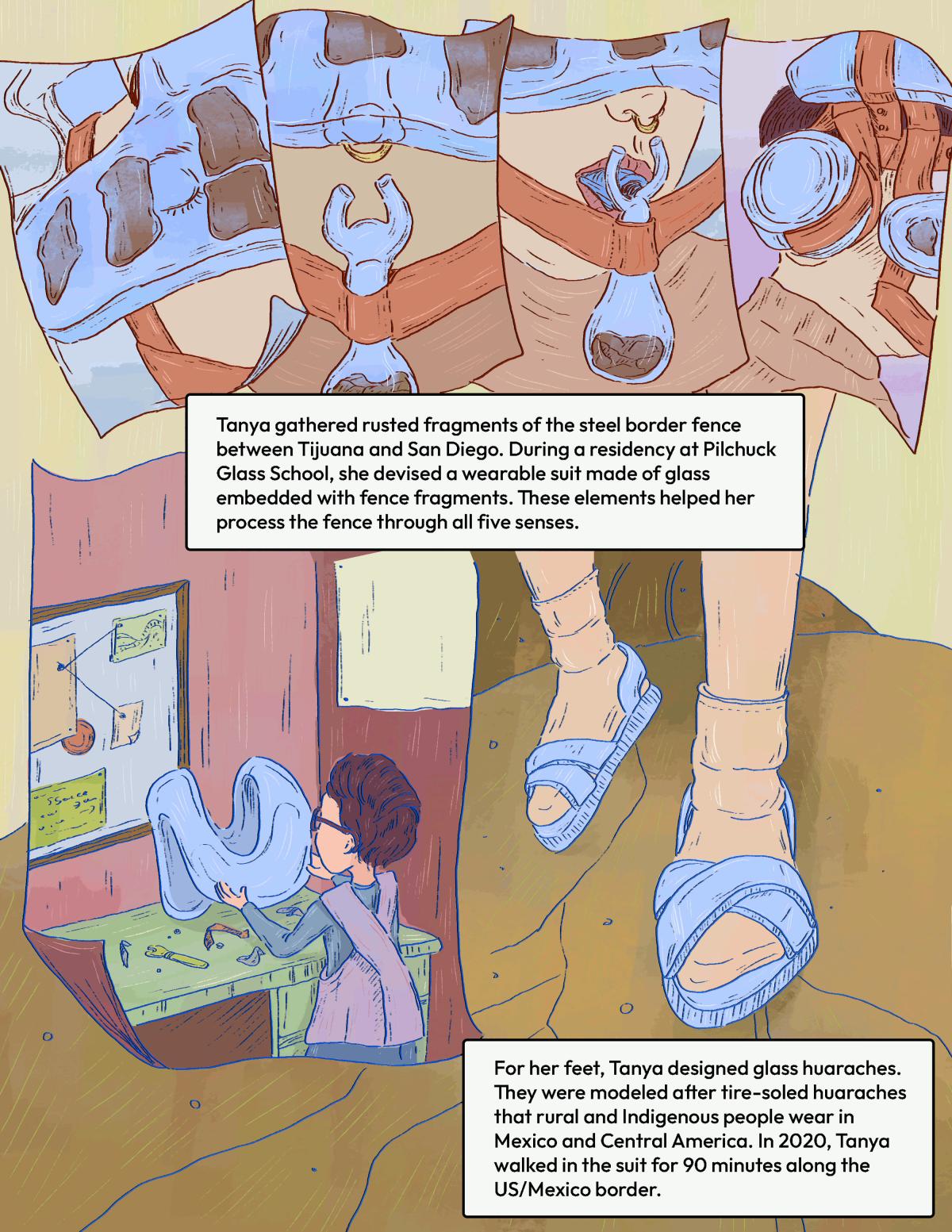
Known for her community-based projects and activism that involve interactions at the U.S.-Mexico border, Los-Angeles based artist and designer, Tanya Aguiñiga, draws from her Mexican American heritage. Her artistic practice includes crafting furniture, making textiles and wearable pieces, and creating site-specific installations, including AMBOS (Art Made Between Opposite Sides), where she engaged with communities on both sides of the U.S.-Mexico border.
The comic, "Border Stories," illustrated by Irene Pae, a student-illustrator at the Ringling College of Art and Design, focuses on Aguiniga’s works that engage the dividing line between the United States and Mexico, specifically, Metabolizing the Border, a wearable artwork the artist created between 2018-2020 at the Pilchuck School of Glass in Washington.
The cover of the comic features Aguiñiga wearing the glass suit while standing in front of the rusted border fence. Pae captures the artwork and all its various parts that symbolize the pain and hardship associated with the border. The fence becomes a motif that runs through the comic, sometimes in the background, and sometimes at the fore. Often, as in the cover, the fence is portrayed with pieces missing, so the blue sky and blue waters are available, as if blue was the color of hope. Pae’s earthy palette matches the story of displacement.
In its few pages, the comic captures Aguiñiga’s process of making the artwork, both the pleasure of creative work and the burden of telling a difficult story. “Border Stories” focuses on the 90 minutes she walked in the suit at the U.S. Mexico border, wearing specially made glass huaraches—modeled after tire-soled huaraches that rural and Indigenous people wear in Mexico and Central America—on her feet that were designed to break, illustrating the lack of support often facing immigrants. Aguiñiga does not step away from difficult subjects in her artwork.
In Pae, the artist has been paired with an illustrator who was able to present this fragile story, even the moments where things fall apart, step by tenuous step, to young people who when they hear the word "border,” may need a guide in understanding the human side of the story.
The comic is part of a series Drawn to Art: Tales of Inspiring Women Artists that illuminates the stories of women artists in the collection of the Smithsonian American Art Museum. Inspired by graphic novels, these short takes on artists’ lives were each drawn by a student-illustrator from the Ringling College of Art and Design.
We invite you to read the comic and share it with your friends and young people in your life.



















